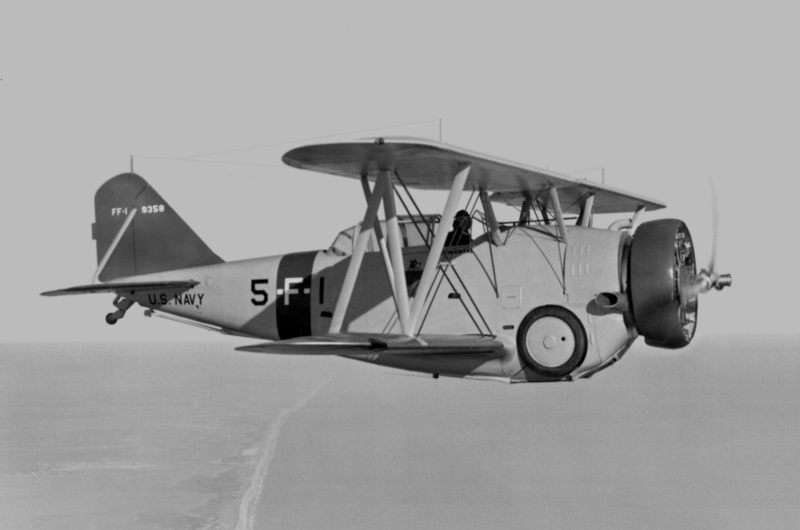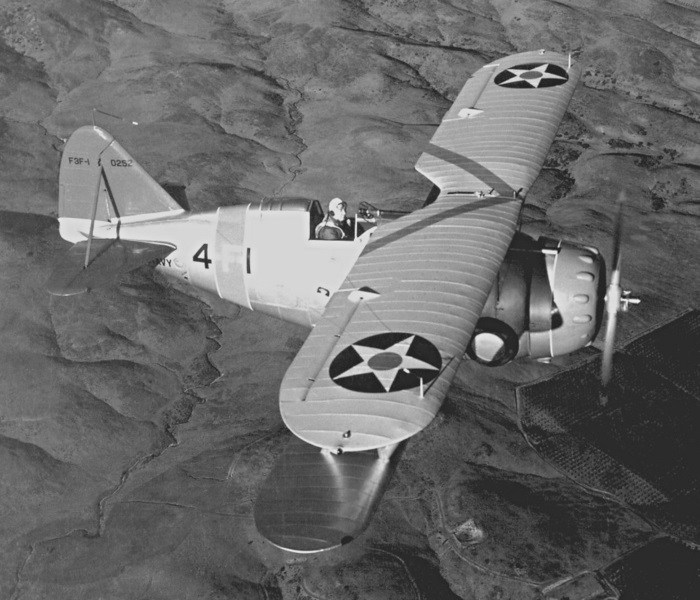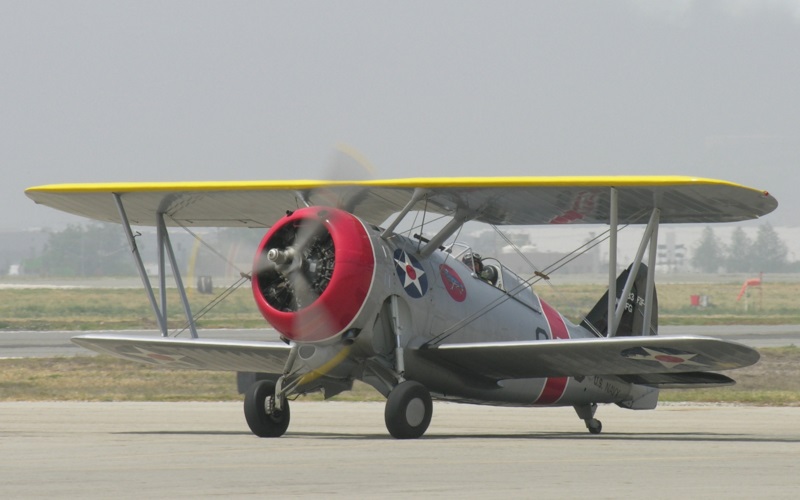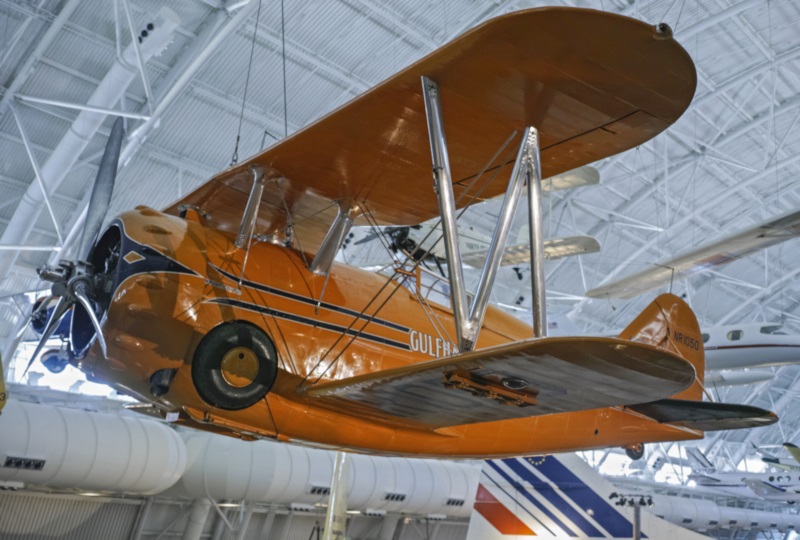
* In the prewar period, the Grumman Aircraft Company established a reputation with the US Navy for building sturdy fighter aircraft through a series of biplane fighters -- starting with the "FF-1" AKA "Fifi", and then the "F2F" and the "F3F", both known as the "Flying Barrel". This document provides a history and description of the Grumman biplane fighters. A list of image credits is provided at the end.
* The Grumman Aircraft Company was established on Long Island, New York, by Leroy Grumman and a group of other engineers in 1929. They had all worked for the Loening Company, but decided not to stay with the company when it relocated, the split being amicable. The company took on various tasks, such as welding truck frames, to stay afloat, but was focused on the US Navy as a customer, starting out by building aircraft floats, but then graduated to building a biplane fighter, with the Grumman "G-5" or "XFF-1" prototype first flying on 22 April 1931. 27 production FF-1 machines followed, with initial deliveries to the Navy in 1933.
The "Fifi", as the FF-1 was nicknamed, had a fuselage of metal construction, but fabric-covered wings. It had an enclosed tandem cockpit and taildragger landing gear, the tailwheel being fixed and the main gear being hand-cranked up into the fuselage. The prototype was originally powered by a Wright R-1820-E Cyclone 9-cylinder single-row air-cooled engine with 460 kW (615 HP), but it was upgraded to the R-1820-F variant with 560 kW (750 HP). The engine drove a two-bladed variable-pitch prop.

Armament was two fixed forward-firing machine guns, either two 7.62-millimeter (0.30 caliber) Brownings, or one 7.62-millimeter Browning and a 12.7-millimeter (0.50 caliber) Browning, the guns firing through the prop arc via synchronizer gear. The forward guns were aimed via a telescopic sight. The back-seater also had a rearward-firing 7.62-millimeter Browning on a flexible mount. It could carry a single 45-kilogram (100-pound) bomb under the fuselage. An inflatable flotation bag could be attached under each wing, and a gun camera mounted on top of the wing center section.
___________________________________________________________________
GRUMMAN FF-1:
___________________________________________________________________
wingspan (top wing):
10.52 meters (34 feet 6 inches)
wing area:
28.8 sq_meters (310 sq_feet)
length:
7.47 meters (24 feet 6 inches)
height:
3.38 meters (11 feet 1 inch)
empty weight:
1,395 kilograms (3,075 pounds)
max loaded weight:
2,110 kilograms (4,655 pounds)
maximum speed:
330 KPH (205 MPH / 180 KT)
service ceiling:
6,375 meters (22,100 feet)
range:
1,040 kilometers (640 MI / 560 NMI)
___________________________________________________________________
Of the 27 FF-1s built, 25 were converted to dual-control trainers and redesignated "FF-2". The Navy also ordered a scout version of the FF-1, the "G-6" or "SF-1", with more fuel tankage and one machine gun removed, powered by an R-1820-78 Cyclone with 520 kW (700 HP) in a longer cowling, with initial flight in 1932, and delivery of 34 in 1934. The FF-1 / SF-1 served until 1937, lingering in secondary roles for a few years.
The FF-1 was also built under license by Canadian Car & Foundry (CCF) as the "G-23", originally known simply as the "Canadian Grumman Fighter". They had an R-1820-F32 engine with 665 kW (890 HP), along with one forward-firing 7.62-millimeter Browning and two more such Brownings on a rearward-firing flexible mount. 40 were ordered by Turkey on behalf of Spanish Republican forces, but only 34 were delivered to Barcelona, being named "Delfin (Dolphin)" by the Spaniards. They saw action in the Spanish Civil War, but were badly outclassed, scoring only one kill in contrast to a number of losses. They were the only Grumman biplane fighters to see combat.
It seems that CCF production was actually set up specifically for Spain, with assemblies built by Grumman and Brewster in the US, and CCF performing final assembly; presumably, the roundabout scheme was set up to get around US neutrality laws. The undelivered six, plus nine more built from a follow-on order from Spain, ended up in the hands of the Royal Canadian Air Force (RCAF) in 1940. Single examples also went to Mexico, Nicaragua, and Japan, the Japanese being mostly interested in the landing gear arrangement. The RCAF Goblins were retired in 1942, the surviving Spanish G-23s lingered into the early 1950s.
BACK_TO_TOPThe US Navy was pleased with the FF-1 since its performance was outstanding by the standards of the time, and ordered an improved single-seat derivative, with the "G-8" AKA "SF2F-1" first flying in 1933, and the Navy ordering 54 production "F2F-1" machines in 1934.

Along with the single seat, it was scaled down from the FF-1, with shorter wingspan and fuselage, as well as lighter empty weight -- less than 90% of the FF-1. It notably differed from the FF-1 in having metal wings. The F2F-1 had, in maturity, a Pratt & Whitney (PW) 14-cylinder two-row air-cooled R-1535-72 Twin Wasp Junior radial engine with 485 kW (650 HP). The engine was in a tight-fitting cowl with blisters over the rocker arms. A retractable tailwheel was introduced, while the rearward-firing Browning was deleted.
___________________________________________________________________
GRUMMAN F2F-1:
___________________________________________________________________
wingspan (top wing):
8.69 meters (28 feet 6 inches)
wing area:
28.8 sq_meters (230 sq_feet)
length:
6.53 meters (21 feet 5 inches)
height:
2.77 meters (9 feet 1 inch)
empty weight:
1,220 kilograms (2,690 pounds)
operating weight:
1,745 kilograms (3,850 pounds)
maximum speed:
370 KPH (230 MPH / 200 KT)
service ceiling:
6,375 meters (22,100 feet)
range:
1,585 kilometers (985 MI / 855 NMI)
___________________________________________________________________
Performance was distinctly improved. Deliveries were in 1935, with the type being nicknamed the "Flying Barrel". It remained in service until 1940.
* One big problem with the F2F-1 was that it was cut down too much, its stubbiness leading to instability. In response, Grumman came up with the refined "G-11" AKA "F3F-1", with first flight in 1935, though the initial prototype was lost in a fatal crash. A second prototype followed, also being lost in a crash, with a third following. Despite the problems, the Navy found the type satisfactory, ordering 54 production "F3F-1" machines later in 1935, deliveries taking place in 1936.
It was longer than the F2F-1 -- length being 7.06 meters (23 feet 2 inches) -- and had a wider wingspan of 9.75 meters (32 feet). It also had a small ventral fin and a smooth cowling; blistered cowlings were a fad in the 1930s, but were abandoned after it was found they did little to improve performance, while being harder to make. Armament was one 7.62-millimeter and one 12.7-millimeter Browning, while the powerplant was an R-1535-84 Twin Wasp Junior with 520 kW (700 HP).

The last F3F-1 was modified as the "G-19" AKA "XF2F-2", with a supercharged XR-1820-22 Cyclone engine providing 710 kW (950 HP), driving a 3-bladed variable-pitch propeller and fitted inside a smooth cowling. The F3F-2 also featured a larger fuel supply. The Navy ordered 81 "F3F-2" production models, with deliveries in 1937 and 1938.
___________________________________________________________________
GRUMMAN F3F-2:
___________________________________________________________________
wingspan (top wing):
9.75 meters (32 feet)
wing area:
24.15 sq_meters (260 sq_feet)
length:
7.06 meters (23 feet 2 inches)
height:
2.84 meters (9 feet 4 inches)
empty weight:
1,490 kilograms (3,281 pounds)
max loaded weight:
2,175 kilograms (4,795 pounds)
maximum speed:
425 KPH (265 MPH / 230 KT)
service ceiling:
10,120 meters (33,200 feet)
range:
1,600 kilometers (980 MI / 850 NMI)
___________________________________________________________________
One F3F-2 was given minor enhancements as the "XF3F-3", with 27 "F3F-3" production machines being ordered, and delivered in 1938:1939. The F3F-3 was apparently tiring to fly, but also very agile, and in particular had a zooming rate of climb. The F3F had a very short service life, the last being retired in 1941, though some lingered as trainers or squadron hacks for a few years. The F2F and F3F were not exported, and did not see any combat.

Along with the F2F and F3F, Grumman built three derivative civilian machines, including:
A number of FF-1s, F2Fs, and F3Fs survive on museum display, with a few F3Fs still being airworthy and appearing at airshows. One Greg Prevost, an aircraft restorer and pilot, commented on what it was like to fly an F3F-2:
BEGIN_QUOTE:
The Flying Barrel was a capable fighter aircraft when it first entered service. Without a doubt, the fact that I had accumulated hundreds of hours on historical aircraft such as the P-40 and P-51 facilitated my conversion onto the type. It is stable and fairly easy to control. Once trimmed out there is no need for corrections with the stick, and it responds well to commands, albeit that its controls are fairly hard to action.
The rate of roll is fair, but the thing that gives me the greatest satisfaction with the aircraft is the excellent speed performance, above all in acceleration and climb. Obviously, you pay for this performance with an elevated rate of fuel consumption, and some of the systems in the aircraft are decidedly more spartan when compared to fighters a few years younger.
END_QUOTE
BACK_TO_TOP* Sources include:
Other details were scavenged from the internet. These aircraft are not over-documented.
* Image credits:
* Revision history:
v1.0.0 / 01 jan 23 v1.0.1 / 01 jan 25 / Review & polish. (*)BACK_TO_TOP
